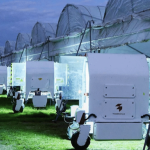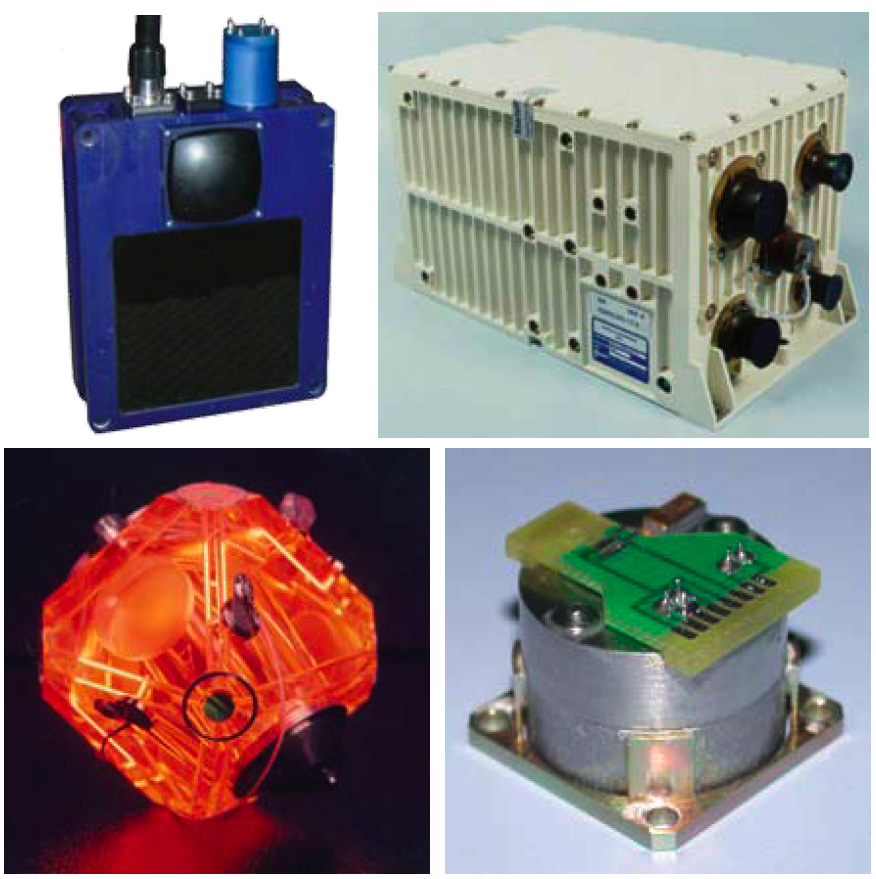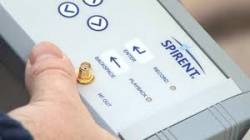 Francisco Rovira-Más, Agricultural Robotics Laboratory, Universidad Politécnica de Valencia
Francisco Rovira-Más, Agricultural Robotics Laboratory, Universidad Politécnica de ValenciaNow that we have had GNSS-driven precision in the fields for nearly 20 years, with widespread and growing acceptance by farm vehicle manufacturers and farmers, what lies ahead for precision agriculture?
Now that we have had GNSS-driven precision in the fields for nearly 20 years, with widespread and growing acceptance by farm vehicle manufacturers and farmers, what lies ahead for precision agriculture?
The unobstructed views of the sky, which eased the task of ensuring robust signal availability for use with commodity crops such as corn and wheat, is narrowing as growers turn their attention to high-value orchard fruit and wine grapes. Moreover, the scarcity of skilled workers in some sectors is undercutting traditional reliance on manual labor for such tasks as pruning, chemical applications, and harvesting.
These forces have encouraged farmers to look toward increasing automation of equipment to ensure continued efficiencies on the farm. To help us sort out these issues, we turned to Francisco Rovira-Más, director of the Agricultural Robotics Laboratory (ARL) at Polytechnic University of Valencia. Dr. Rovira-Más obtained a Ph.D. in agricultural engineering from the University of Illinois at Urbana-Champaign in the United States.
Among the ARL’s activities is participation in the VineRobot project, an EU-funded effort to integrate machine vision, infrared, GNSS, and other technologies to optimize vineyard management, decision-making, and improve grape quality.
IGM: What are some of the more promising sensors and technologies being incorporated with GNSS to augment and enhance the precision guidance, navigation, and control (GNC) of automated farm equipment?
ROVIRA-MÁS: The major complement to global positioning is local perception. Agricultural environments are open and unpredictable; therefore automation and guidance can never be achieved safely unless vehicle surroundings are reliably sensed. In addition, the tight spacing between crop rows often results in tolerances of a few inches, where real-time fine adjustments from neighboring features are instrumental to avoid collisions.
Machine vision provides a rich source of information that can be analyzed with efficient processing techniques at high rates. However, working outdoors poses serious challenges for long-term stability due to the continuous changing in the relative orientation between the sun and the farm vehicle and the common presence of shadows and reflections. Stereoscopic vision, on the other hand, is more robust to changes in ambient light because intensity variations affect the left- and right-hand images similarly, allowing their pixel-wise correlation as long as a minimum level of texture exists, which is usually granted in off-road environments. The fact that stereo perception provides a 3D representation of a vehicle’s vicinity is key to detect obstacles and estimate how far away they are.
The main disadvantage of 3D stereo has traditionally been its computational cost limiting real time capabilities, although current processors perform excellently with images of moderate resolution. An alternative to computer vision for finding guidance cues is represented by laser rangefinders known as lidar sensors. These provide a faster response and can typically detect obstacles at greater distances, but they usually scan in one plane and, as a result, are more prone to noise, especially in the dusty atmosphere of field terrains.
IGM: Automated precision guidance of agricultural equipment has most commonly been associated with large-scale production of commodity crops in open spaces. However, GNSS and integrated positioning technologies are also being used in specialty crops, orchards, and vineyards. Could you comment on some of these applications?
ROVIRA-MÁS: The added value associated with specialty crops makes their growers prone to adapt new technologies such as precision farming, robotics, and information technologies. The high competitiveness of global markets and the lack of young farmers in industrialized countries practically leave the incorporation of automated or semi-automated technologies in the field as the only alternative.
The apple industry in Washington State has been demanding automated solutions for a long time, the citrus sector in Spain cannot cope with labor costs, and the winegrowers in France’s Burgundy region have trouble finding skilled workers for vine pruning in the winter. The requirement is basically the same: cost-efficient precise machines capable of delivering specialized work at a near-human pace.
The case of the wine industry is especially attractive for technology-based solutions, as wine can be considered a luxury rather than a basic product, and investment in high-performance equipment is easier to justify.
Premier wine requires the identification of grapes with homogeneous characteristics and here is where GNSS becomes irreplaceable, as mixing grapes of varying quality is the recipe for a mediocre wine. Global positioning allows the mapping of vineyards according to quality and harvest readiness, which in turn is the gateway to differential harvesting, the longstanding dream of many viticulturists.
Most medium-size orchard farmers, however, are not willing to pay a subscription fee for a higher quality differential signal; so, such commercial applications must offer safe solutions in light of this constraint.
Although differential corrections can remove important atmospheric errors, multipath and signal blockage often occur when a vehicle traverses an orchard or gets close to farm buildings. The main challenge is, therefore, finding the right balance between cost-efficiency and data robustness.
IGM: What issues, technical or other, still need resolution to realize the full potential of GNSS and related technologies in automated precision farming?
ROVIRA-MÁS: The most important issue by far is the long-term availability, reliability, and consistency of data. The rugged terrains and weather conditions of farm land require solutions comparable to those achieved by army vehicles but limited to much smaller budgets for equipment acquisition. All agricultural vehicles — intelligent or manned — have to be cost-efficient. The size and power of farm equipment ranges from gigantic harvesters of several tons and hundreds of horsepower to small scouting robots operating on electric batteries that are beginning to appear on the market.
IGM: What are the trends for operator involvement with integrated equipment? For instance, do they operate field vehicles remotely or on board?
ROVIRA-MÁS: So far, precision farming applications usually require operators to interact with a monitor on board the vehicle, but the current trend is to access and transfer data via mobile platforms such as cell phones and tablets. A crucial challenge for system integrators is the design of the user interface, as the complexity of operating these systems, regardless of their underlying intricacy, must be comparable to that of cell phone browsing or even less difficult. Intelligent off-road vehicles will generally be operated by farmers and field managers, who are not IT experts and have no time for tutorials.
IGM: Autonomous and semi-autonomous navigation raises issues of safety for agricultural workers as well as preventing damage to crops and the machines. What kinds of safeguards are being incorporated into GNC systems of automated field equipment?
ROVIRA-MÁS: All auto-steered agricultural vehicles require the presence of the operator inside the cabin. In automatic mode, when GPS signal reception is weak or if the driver stands up, removing weight from the seat, the vehicle stops. The only exception is California where a law allows automated machines to operate without a driver as long as there is a safety remote switch to control throttle, clutch, and brakes, and speed is below three km/h.
Many potential solutions never reached the commercial stage due to liability issues, especially with traditional equipment of considerable dimensions. New designs tend to reduce vehicle size to decrease the risk of accidents. For these cases, obstacle detection sensors — imaging or lidar — and a reliable GNSS fault-detector would suffice for performing specific farm tasks. Nevertheless, safety requirements remain a big barrier to widespread farm vehicle automation.





